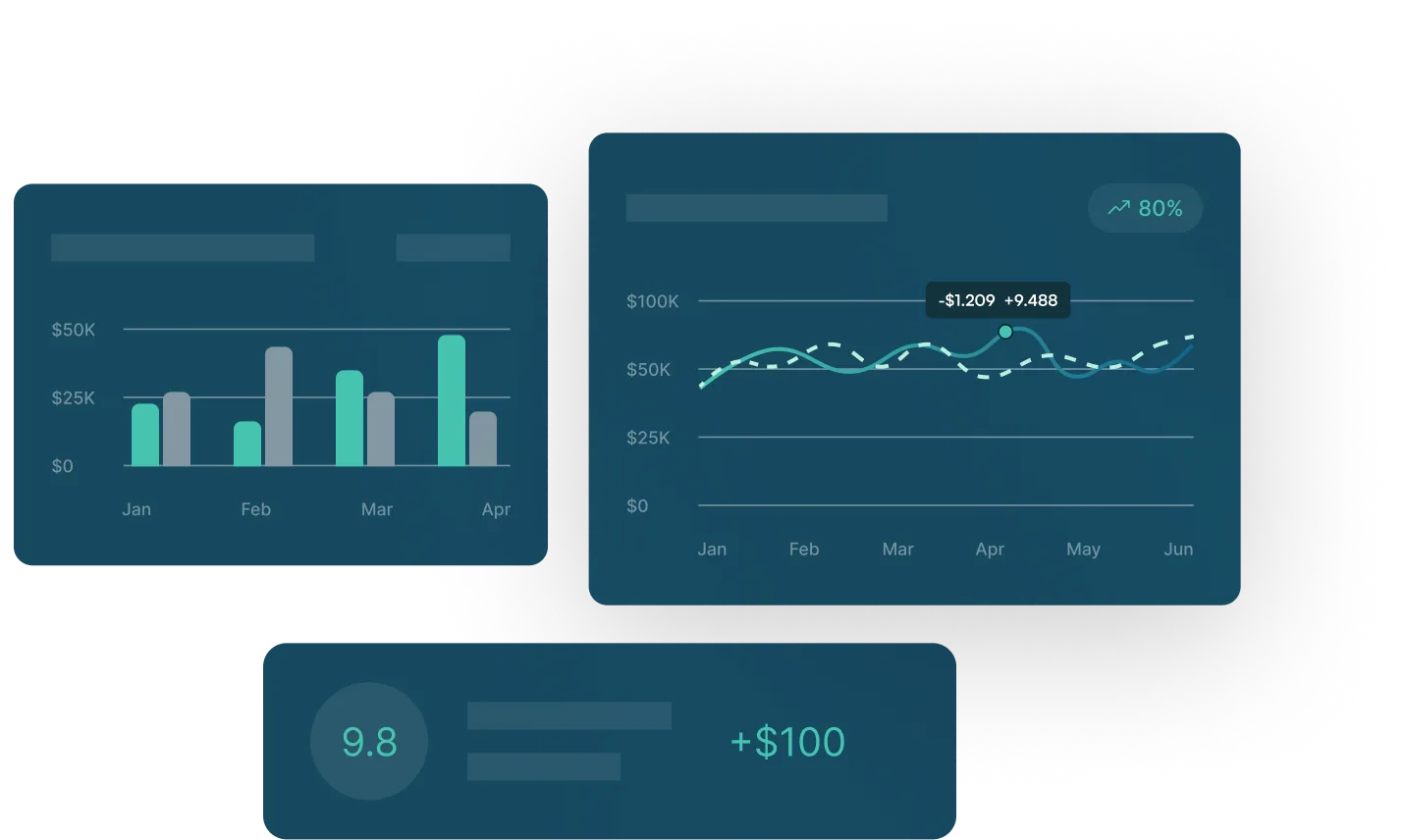Top Methods of Measuring Cash Forecasting Accuracy


Navigating the complexity of cash forecasting data can be challenging; knowing what to measure and how often to track it makes all the difference. Fragmented or inaccurate data can fundamentally undermine your financial planning and decision-making.
Two widely used methods are the single period actual versus forecast method and countdown accuracy analysis. Each method provides valuable insights into forecast performance to help you refine your cash forecasting accuracy and create a path to better forecasting.
Single Period Actual Versus Forecast
Forecasting accuracy measurements are all based on an actual versus forecast calculation; this calculation involves comparing a forecast cash position or flow to the actual cash position or flow. How frequently you can carry out actual versus forecast analysis is determined by both the frequency at which you forecast and the availability of actual data.
This approach compares the predicted cash flows for a given period against the actual cash flows recorded during that same period. Ultimately, the goal is to determine how closely the forecasted values align with reality, allowing you to refine your processes over time.
The formula used to calculate forecast accuracy in this method is:

This is a simple, but powerful way to measure accuracy and is particularly useful for single period analysis such as week-over-week or month-over-month.
Countdown Accuracy Analysis
Countdown accuracy analysis builds on Actual versus Forecast analysis and allows you to track the accuracy of forecasts as you move towards, or count down to, a “target” date.
Simply put, countdown analysis requires carrying out a series of actual versus forecast calculations on forecasts received leading up to the target date; the analysis can be completed as soon as the actual figure or flow on the date is available.
Unlike the previous method, which evaluates a single forecast period, countdown accuracy analysis measures how forecast accuracy changes as the prediction window shortens. This approach will help you understand whether forecasts improve as the forecast date approaches or if systematic errors persist.
The method involves tracking forecasted cash flows at different intervals before the actual event—such as 30 days, 15 days, 7 days, and 1 day before the cash movement occurs. Accuracy at each stage is calculated using a similar formula to single-period analysis:

By examining accuracy across multiple time points, organizations can identify patterns in forecast performance. Ideally, forecast errors should decrease as the actual cash flow date nears, reflecting improved precision. However, if errors remain high or fluctuate unpredictably, this may indicate underlying issues such as poor data inputs, timing mismatches, or ineffective forecasting models.
Key Takeaway: Use a Targeted Approach
Targeting a key metric and a point in time is an essential first step in measuring the accuracy of cash forecasts.
To improve forecasting accuracy, you should analyze discrepancies by identifying patterns, unexpected cash movements, or timing mismatches in payments and collections.
Regularly revising forecasts based on historical trends, adjusting for seasonal variations, and incorporating real-time data can help enhance precision. Additionally, tracking accuracy over multiple periods provides valuable insights into whether errors are random or systemic, guiding improvements in forecasting models.
To learn more about GTreasury’s cash forecasting solution and enhance the accuracy of your forecasts with automation, request a consultation with our team of experts now to get up and running in 90 days.
Top Methods of Measuring Cash Forecasting Accuracy
Navigating the complexity of cash forecasting data can be challenging; knowing what to measure and how often to track it makes all the difference. Fragmented or inaccurate data can fundamentally undermine your financial planning and decision-making.
Two widely used methods are the single period actual versus forecast method and countdown accuracy analysis. Each method provides valuable insights into forecast performance to help you refine your cash forecasting accuracy and create a path to better forecasting.
Single Period Actual Versus Forecast
Forecasting accuracy measurements are all based on an actual versus forecast calculation; this calculation involves comparing a forecast cash position or flow to the actual cash position or flow. How frequently you can carry out actual versus forecast analysis is determined by both the frequency at which you forecast and the availability of actual data.
This approach compares the predicted cash flows for a given period against the actual cash flows recorded during that same period. Ultimately, the goal is to determine how closely the forecasted values align with reality, allowing you to refine your processes over time.
The formula used to calculate forecast accuracy in this method is:

This is a simple, but powerful way to measure accuracy and is particularly useful for single period analysis such as week-over-week or month-over-month.
Countdown Accuracy Analysis
Countdown accuracy analysis builds on Actual versus Forecast analysis and allows you to track the accuracy of forecasts as you move towards, or count down to, a “target” date.
Simply put, countdown analysis requires carrying out a series of actual versus forecast calculations on forecasts received leading up to the target date; the analysis can be completed as soon as the actual figure or flow on the date is available.
Unlike the previous method, which evaluates a single forecast period, countdown accuracy analysis measures how forecast accuracy changes as the prediction window shortens. This approach will help you understand whether forecasts improve as the forecast date approaches or if systematic errors persist.
The method involves tracking forecasted cash flows at different intervals before the actual event—such as 30 days, 15 days, 7 days, and 1 day before the cash movement occurs. Accuracy at each stage is calculated using a similar formula to single-period analysis:

By examining accuracy across multiple time points, organizations can identify patterns in forecast performance. Ideally, forecast errors should decrease as the actual cash flow date nears, reflecting improved precision. However, if errors remain high or fluctuate unpredictably, this may indicate underlying issues such as poor data inputs, timing mismatches, or ineffective forecasting models.
Key Takeaway: Use a Targeted Approach
Targeting a key metric and a point in time is an essential first step in measuring the accuracy of cash forecasts.
To improve forecasting accuracy, you should analyze discrepancies by identifying patterns, unexpected cash movements, or timing mismatches in payments and collections.
Regularly revising forecasts based on historical trends, adjusting for seasonal variations, and incorporating real-time data can help enhance precision. Additionally, tracking accuracy over multiple periods provides valuable insights into whether errors are random or systemic, guiding improvements in forecasting models.
To learn more about GTreasury’s cash forecasting solution and enhance the accuracy of your forecasts with automation, request a consultation with our team of experts now to get up and running in 90 days.

See GTreasury in Action
Get connected with supportive experts, comprehensive solutions, and untapped possibility today.





























.jpg)
.png)


























.png)




.jpeg)

.jpeg)











.jpeg)


.jpeg)







.jpeg)


.jpeg)









.jpeg)
















.png)





